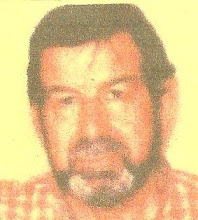By Dr. Mahmoud S. Audi
On Saturday, December 27, 2008, Israel, outraged by the Palestinian rockets, and driven by electoral politics, took to the sky over the Gaza Strip and, in the manner of “shock and owe”, produced more dead, destruction, pain, bitterness, hate, and terror. The majority of the1.5 million Gazans were terrorized.
Also outraged by the Israeli air to ground smart missiles and artillery targeting schools filled with pupils and civilians seeking shelter, mosques filled with civilians seeking God’s protection, houses occupied by civilians.
Yielding to international pressure, and internal political environment, Israel accepted a truce on Saturday, January 19, 2009, and withdrew its troops and military equipment from the Gaza Strip. The Gaza government accept one week truce to give Israel time to withdraw and end the blockade.
Then what? A truce is a pause between wars, or an opening for conflict resolution, and peace. The GG and Israel had a six months truce that started in June 2008. The Palestinian GG had been able to reduce the number of rockets that were fired from GS to southern Israel from hundreds in May and June, 2008 to less than 20 during the subsequent four months—some of the Palestinian resistance groups refused the truce. The GG did manage to control most of them.
During the same truce, the Israelis stopped all major bombardments in GS, but they did not lift the land, see and air blockade of GS, and it did not stop the killing of prominent Palestinians civilians, including academicians. The blockade has crippled the G economy, and prevented any development of GS. It also suffocated and starved the people. Smuggling was the only means that kept them alive. The smuggling business flourished.
The killing and the destruction will not end the suffering of neither the Palestinians nor the Israelis. On the contrary, the dead left behind people who grief for the loss, and that grief will not go away.
Many Israelis and many Palestinians believe in the two-state solution as an end to the cycle of violence. But to achieve this end the commitment of the United States to it is essential. No other country can do it. Israel awes its strength to the generosity of citizens of the USA. Palestinians trust the US because they believe that, if committed, it can deliver. The Jimmy Carter, former president of the US, model is instructive. He was able to conclude peace agreement in 1979 between Begin, the hawkish prime minister of Israel, and Sadat, the dovish president of Egypt.
Can George Mitchell bring peace between the Syrians, the Lebanese, and the Palestinians on one side and Israel on the other side? Speaking in the name of president Obama, who charged him with the mission, he can do it. But the intervention of the President is crucial. I believe president Obama will do that, and he would be effective. However, the role of Obama would be most forceful during his second term as president. He would have had learned from Jimmy Carter who lost the election for a second term, mostly because of his dedication to the cause of peace in the Middle East and his involvement in the process of creating it.
Similar process could achieve peace between Israel on one side, and Syria and Lebanon on the other side.
But when it comes to Palestine, the story is different. Israelis believe that they can with their local superpower status grab the land of the unarmed Palestinians. At the same time, there are Palestinians who believe that they can establish a democratic state between the river (Jordan) and the sea, thus erasing the dream and the reality of more than sixty years, of Jews to live in their own State in Palestine.
Mr. Mitchell here is the first step you should try:
Peace without disavowing the dream of a larger Israel is not possible, and without accepting Israel as an independent Jewish state is not acceptable.
George Mitchell has these two desired goals to make them unwanted. They are impediment to peace. A document should be prepared which includes these two negative principles and all the positive principles and signed between the Israelis and the Palestinians, the president of the United States, and the other members of the quartet. The contents of this document should be publically announced.
the second step: You do not make peace with those whom you like, it is in the package. You make peace with those whom you do not like.
A warning: the easiest way to fail, Mr. mitchell, is to exclude major players in the politics in the area! Include Lekud and Hamas, but do not include the Neo Cons! these do not want peace, they want dominance.
Monday, February 2, 2009
Subscribe to:
Posts (Atom)
